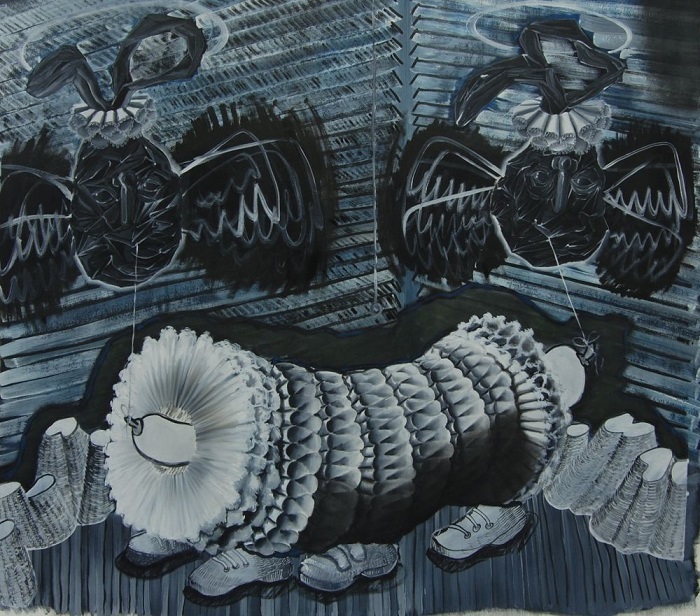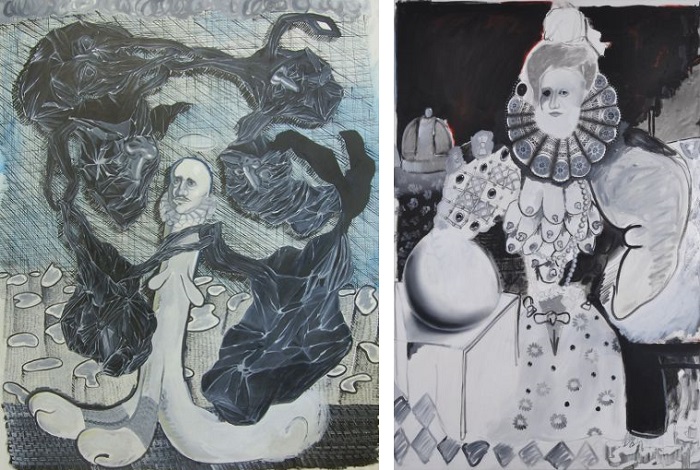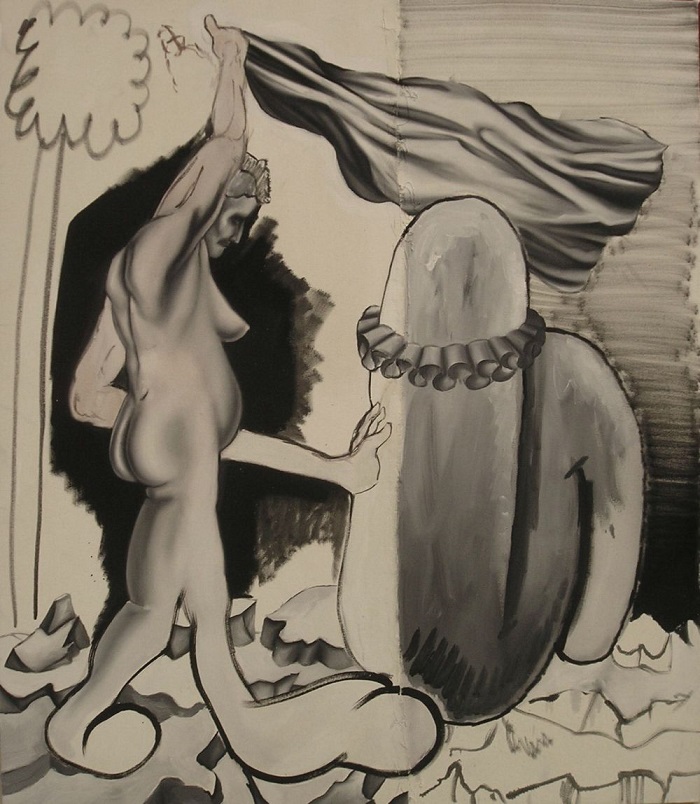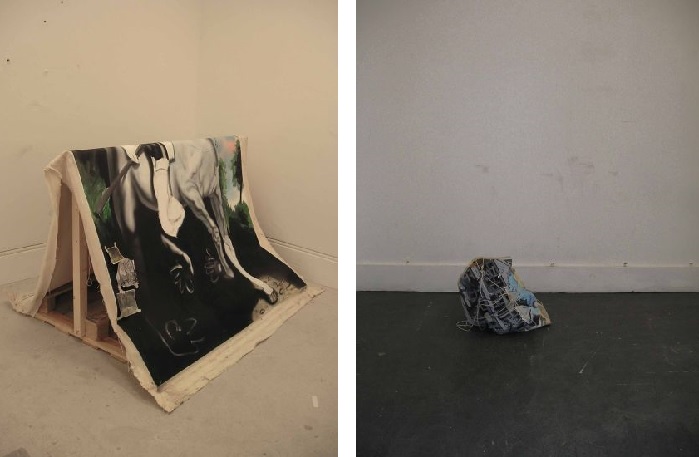 Nicholas Dedics graduated from Chelsea College of Art and Design in 2012 with an MA in Fine Art. His paintings have been shown in the ‘New Sensations’ at the Saatchi Gallery and recently in the ‘Hot One Hundred’ at the Schwartz Gallery.
Nicholas Dedics graduated from Chelsea College of Art and Design in 2012 with an MA in Fine Art. His paintings have been shown in the ‘New Sensations’ at the Saatchi Gallery and recently in the ‘Hot One Hundred’ at the Schwartz Gallery.
How important is the medium you use to the subject matter/message?
I feel painting as a medium freely allows me to express my messages in the ways I want. In the painting process I let my imagination take over, acting out the roles of the fictional people from where I source my images and thoughts from. Only painting lets me approach a piece in this ‘interchanging personality’ way – putting marks on the canvas as if made by different people, but ultimately it’s all done by my hand, it’s all me and I find that interesting.
How did your time at art school help in the development of your practice?
This work has been a continuous project over the past 5/6 years, constantly evolving and reinventing itself as one piece informs the next. Having the work ‘open’ to peers at university allowed me to have an environment to engage, push and experiment with the work. Now I have reached a plateau where I’m interested in what I’m producing and there’s still room to keep developing.
Your work draws heavily on art history. Are you more inspired in museums or elsewhere?
I am more inspired by museums (NOT the terrible science museum!), as recently I’ve been practically living at the British Museum, going there sometimes 4 times a week. But as an artist; anything can inspire and influence me at anytime or anywhere, I just have to find it interesting enough.
Your recent paintings have been done in grey, what is the thinking behind this?
Originally it was conceptual but over time this became a practical matter. I like the challenges black and white paintings offer; it lets me concentrate more on line and mark. There is colour in the works, but because it’s so muted I feel this has a far bigger impact than getting hit in the face with a big bold colourful painting. Also I feel pure colour is so industrial; if I want colour I’d turn on the TV or look at graphic design, maybe I feel I can’t compete with it anymore, I dunno.
You’ve written that your works deals with ‘dumbing down of culture and the technological displacement of human knowledge and skill’ and ‘A satirical critique of contemporary culture in which identity is so important’. Is this something that you could paint with more contemporary imagery?
Well what is contemporary imagery? If I Google ‘old master painting’ I get something new, instant in the here and now, to me that is contemporary culture/imagery. We never get the old master painting we originally requested in the search bar; we get a digital copy, sometimes corrupted and warped. Because of the internet and this idea of free for all reinvention – I feel everything has become part of a contemporary visual language that is sourced from anytime, anywhere and by anyone.
You have a few recurring features in your work; ruffs, balloons, plastic bags. Do they have a particular meaning to you?
Well, the ruffs have always been a symbol of historical power, put a ruff on something and boom!…. it instantly has that power bestowed on to it, no matter how ridiculous it is. They are also an important visual pointer to the past and its heritage. The plastic bags become an important link to the past for my imaginary people I think of when making the work. If civilisation disappeared what would be left? Just our rubbish – the plastic bags, the empty coke cans etc.. that’s what’s important to these fictional people, hence they have an important cultural, semi-religious meaning placed onto them much like what we see in religious icons and museum artefacts.
Where do the Bean Heads come from and what do they mean?
The bean heads are to do with the myth of growing your own saints and therefore growing your own historical heritage. There’s so many saints in the real world with strange and silly stories, so the bean heads play on that idea. Everyone wants a personal saint so why not just cultivate and grow your own.
You’ve experimented with different ways of displaying your paintings. What does this add to the piece?
It was all about the idea of iconoclasm, taking the painting off the sacred wall and doing things like kicking it about the dirty studio floor as a football, that was it then, the finished piece. Ultimately paintings are just pigment on fabric – but as objects they have so much value attached to them. I wanted to break down these conceptions and put the ‘ordinary object’ back into painting.
If time and money was not an issue, what scale and medium would you use and what would you make?
I would love to work in sculpture again, make something from stone, wood and bronze… something really big, I have a few ideas I’d like to realise but I just don’t have the means to do them right now. Oh, and some large scale paintings too.
Would you prefer to see your work displayed in the National Gallery alongside old masterpieces or in a Contemporary institute?
Well either really, I can’t say I prefer one to the other. Both are very nice!!
It’s interesting seeing how your paintings have evolved. They appear to have become less portrait/figurative based and more towards the abstract with your signature symbols? Are you developing your work to become more free and abstract?
I’d never call myself an abstract painter, although there are abstract elements both visually and conceptually in the work. I think of the work as definitely figurative. The portraits were quite static in terms of ‘here I am = power/history’. From that I have developed the work whereby focusing more on folklore, myths and religion and therefore further developing the narrative and my relationship to this imaginary society, but where that will lead my work I can’t say.






